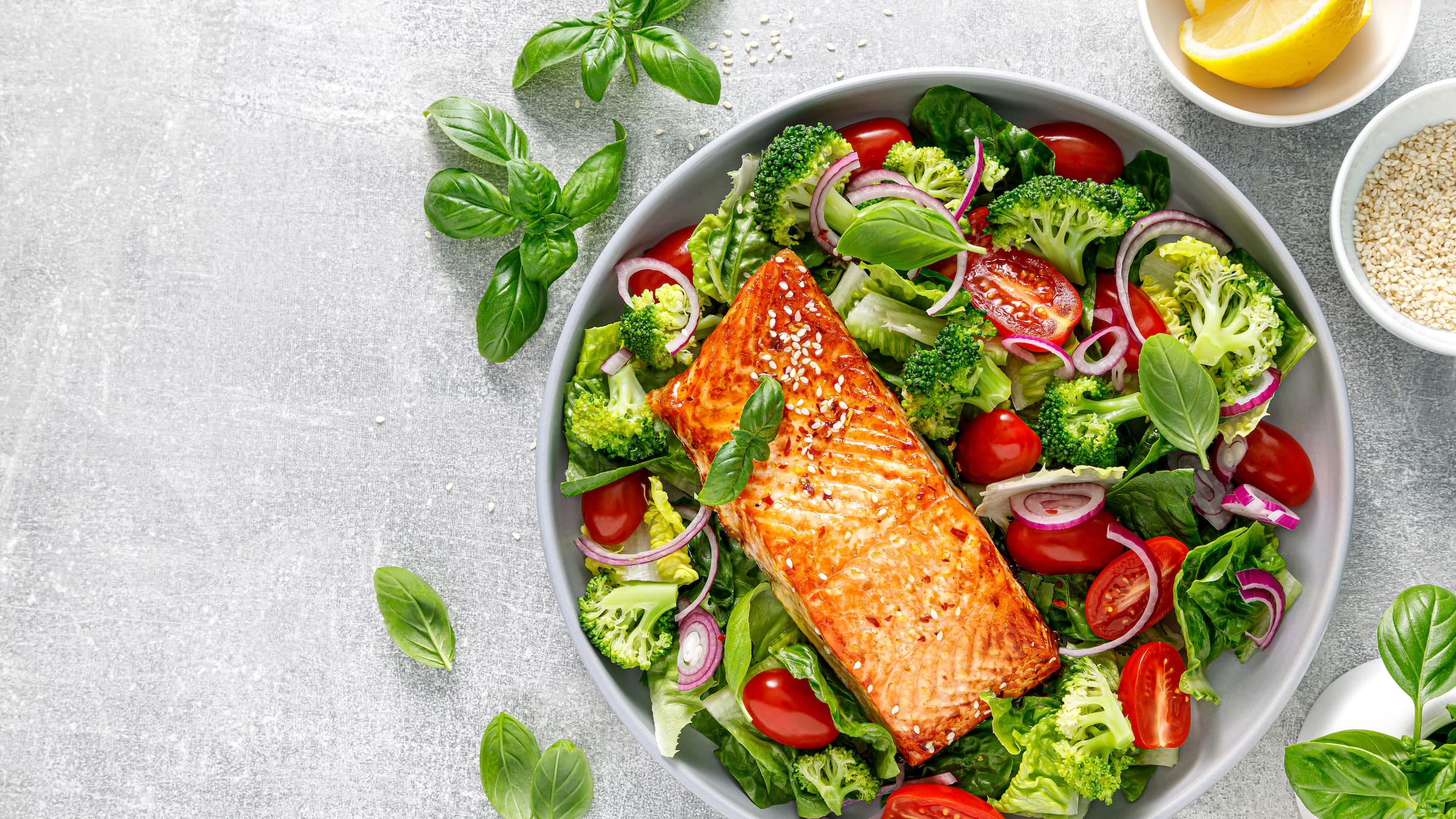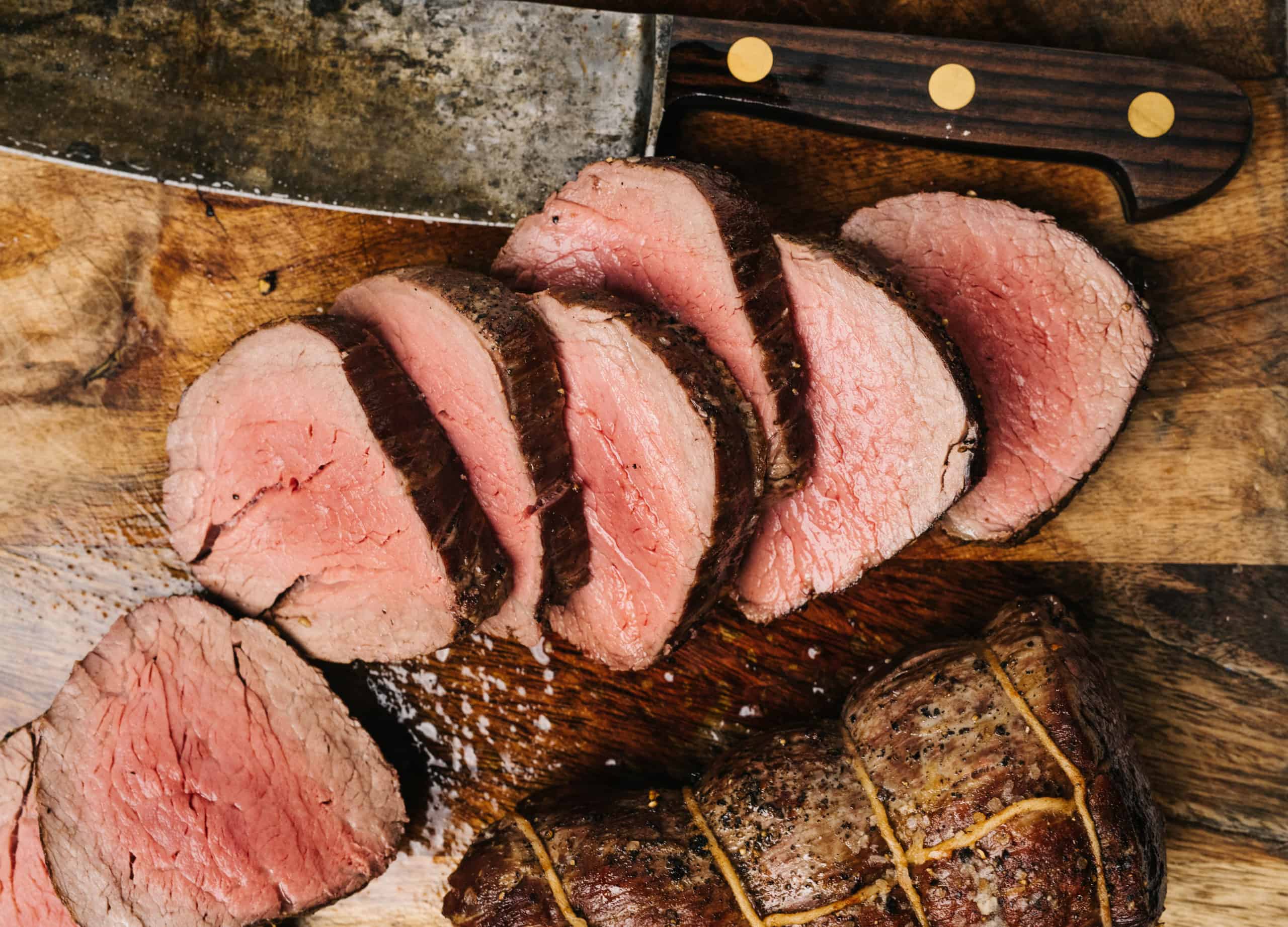- The Mediterranean keto diet combines the eating patterns of the Mediterranean and keto diets.
- The diet focuses on healthy fats like olive oil, nuts, seeds, and fatty fish, along with reduced carb intake.
- Research suggests there are health benefits to Mediterranean keto, but such restrictive diets can be difficult to follow.
If you want to try the ketogenic diet, but are worried about consuming too much saturated fat, you might consider a Mediterranean keto diet.
We don’t endorse restrictive dieting here at Noom, but we do want you to find an eating style that’s enjoyable and sustainable for you, whatever that might be.
So we talked with Emily Rivelli, MS, NDTR, NBC-HWC, to learn how to follow a Mediterranean keto diet and its benefits and drawbacks.
Note: Consult with a medical professional before making any dietary changes.
Is there such a thing as a Mediterranean keto diet?
Yes—just like the name suggests, the Mediterranean keto diet is a combination of the Mediterranean and keto diets.
The ketogenic, or “keto,” diet is a very low-carbohydrate diet that’s high in fat.
Meanwhile, the Mediterranean diet is a primarily plant-based eating pattern that emphasizes whole grains, healthy fats, fruits and vegetables, and seafood.
The Mediterranean keto diet combines the typical macronutrient breakdown of a standard keto diet with whole foods common to the Mediterranean diet, like olive oil, nuts, seeds, and fatty fish.
Can you do a low-carb version of the Mediterranean diet?
Yes, you can. The flexibility of the Mediterranean diet is one of its many benefits—there’s not just one way to follow it.
On a low-carb Mediterranean diet, you would eat fewer carbohydrates (like bread and pasta) and more lean protein, healthy fats, and low-carb veggies.
Real results with a personalized weight loss program
Take the quiz!

The Mediterranean keto diet is an example of doing the Mediterranean diet with very low carbs.
How does the Mediterranean keto diet work?
To follow a Mediterranean keto diet, you’ll first determine what your daily macronutrient intake should look like. Keto resources generally recommend the following calorie breakdown:
- 70% to 80% fat.
- 5% to 10% carbs.
- 10% to 20% protein.
So, if you follow a 2,000 calorie diet, you’ll need to reduce your carb intake to 50 grams or less per day. You can do this by limiting grains, starchy vegetables, and highly processed foods.
But unlike a traditional keto diet, the Mediterranean keto diet encourages you to meet your macronutrient goals by relying more on plant-based fats like olive oil, rather than animal-based fats like red meat and butter.
Remember, however, that red meat and butter are still allowed in moderation on the Mediterranean diet.
Reflection exercise
Imagine you are getting started with a Mediterranean keto diet. What are some changes you could make to your current eating habits?
Think about a few swaps you might make—like replacing red meat with a salmon filet once a week, or cooking with olive oil instead of butter.
The pros and cons of a ketogenic Mediterranean diet
There’s a ton of research on both the Mediterranean and keto diets, but not much when it comes to combining the two.
“With such limited data, it’s hard to identify the impacts of this dietary pattern in the long term,” says Rivelli. Here’s what we know.
The pros
The research that does exist on the Mediterranean keto diet indicates that it may offer health benefits.
In one small study, people following a “Spanish Ketogenic Mediterranean diet” showed statistically significant improvements in some health markers.
They saw reductions in body weight, body mass index, blood pressure, total cholesterol, triglycerides, LDL (bad cholesterol), and glucose, while seeing a significant increase in HDL (good cholesterol).
Another study considered the use of a Mediterranean keto diet with added herbal extracts to lose weight, followed by a Mediterranean diet for maintenance. About 88% of those participants maintained their weight loss throughout the 12-month study.
“There were also positive health indicators observed in that study, including a decrease in total cholesterol and stabilization of blood glucose levels,” Rivelli says.
Individually, research shows that both the keto and Mediterranean diets can help with weight loss, as well as diabetes management.
“The Mediterranean diet, which has more robust research, has been linked to a lower risk of cardiovascular disease, type 2 diabetes, and some cancers. It’s also been associated with improved brain function and longevity,” says Rivelli.
The cons
The Mediterranean keto diet does have a few drawbacks.
One potential downside to the Mediterranean keto diet is the “keto flu,” which some keto eaters experience as their body adjusts to ketosis. Symptoms of the keto flu include:
- Dizziness
- Vomiting
- Nausea
- Fatigue
- Headache
In most cases, these symptoms will resolve themselves within a week or two.
The bigger challenge, perhaps, is how difficult restrictive diets can be to maintain.
“Keto diets, including the Mediterranean keto diet, are very restrictive in nature, which can make sustainability very challenging,” says Rivelli.
You may have to give up some of your favorite comfort foods on the Mediterranean keto diet to keep your carb intake below 50 grams per day.
And it’s easy to feel discouraged if you have a carb-heavy day that knocks you out of ketosis, which can lead to giving up on the diet—or your health and weight loss goals entirely.
Here at Noom, we don’t recommend following restrictive diets or eliminating entire food groups. We believe that sustainability is key for weight loss and that we all deserve to treat ourselves from time to time.
One possible strategy is to start with a Mediterranean keto diet for a short period of time, then transition to the more sustainable Mediterranean diet for the long-term.
A Mediterranean keto diet food list for beginners
Since the Mediterranean diet isn’t restrictive, the foods you eat will be largely determined by the rules of the keto diet.
A Mediterranean keto diet may include:
- Olive oil.
- Seafood.
- Limited red meat and poultry.
- Leafy greens and other non-starchy vegetables.
- Berries.
- Some dairy products, like Greek yogurt.
- Nuts and seeds.
- Red wine (in moderation).
Some foods that don’t fit into a Mediterranean keto diet are:
- Most fruits.
- Starchy vegetables, like potatoes.
- Grains.
- Highly processed foods.
- Sugar.
Take a look at the chart below to see what you can eat on the keto, Mediterranean, and Mediterranean keto diets.
| Keto | Mediterranean | Mediterranean keto | |
|---|---|---|---|
| Vegetables | Yes, with an emphasis on low-carb, non-starchy vegetables. | Yes. | Yes, with an emphasis on low-carb, non-starchy vegetables. |
| Fruits | Typically no, but low-carb fruits (like some berries) are allowed. | Yes. | Typically no, but low-carb fruits (like some berries) are allowed. |
| Meat | Yes. | Limit red meats (like beef, pork, lamb, and venison) in small portions, and eat poultry in moderate amounts. | Limit red meats (like beef, pork, lamb, and venison) in small portions, and eat poultry in moderate amounts. |
| Seafood | Yes. | Yes. | Yes. |
| Dairy | No cow’s milk, but low-carb dairy products like cheese, butter, cream cheese, cottage cheese, sour cream, and heavy cream are allowed. | Yes (in moderation). | No cow’s milk, but low-carb dairy products like cheese, butter, cream cheese, cottage cheese, sour cream, and heavy cream are allowed. |
| Eggs | Yes. | Yes (in moderation). | Yes (in moderation). |
| Beans and legumes | For the most part, no. Soybeans and green beans are allowed. | Yes. | For the most part, no. Soybeans and green beans are allowed. |
| Grains | No. | Yes—primarily whole grains. | No. |
| Nuts and seeds | Yes. | Yes. | Yes. |
| Healthy fats and oils | Yes, keto-friendly options like olive oil and ghee. (No vegetable oil.) | Yes—primarily extra virgin olive oil. | Yes—primarily extra virgin olive oil. |
| Sugary/processed foods | No. | Limit sweets and heavily processed foods to small portions. | No. |
How to get started with a Mediterranean keto diet
If you’re considering the Mediterranean keto diet, we’re here to help. Rivelli shares some of her best tips for getting started.
1. Ask questions
First and foremost, always check in with your health care provider and do some research on your own before making a significant dietary change.
“Research is your friend. Just be sure you’re checking facts and using reputable sources, like the Academy of Nutrition and Dietetics, PubMed, or the Harvard School of Public Health,” Rivelli says.
Finally, identify what you hope to accomplish with the Mediterranean keto diet. Some specific questions Rivelli recommends asking yourself:
- Am I looking for a quick fix or something long term?
- If I do this long term, what might that look like for me?
- Does this feel realistic for me and the lifestyle that I am leading?
- What barriers and obstacles might derail this from being a good option for me? Are those things in or out of my control?
- Does this align with my health and wellness goals?
When you understand your motivation (or your “ultimate why,” as we say at Noom), you’ll increase your chances of success.
2. Change your diet gradually
“Completely changing the way you eat all at once is a heavy lift,” Rivelli says. “Sometimes, stair-stepping your way into a change can help you stick with it and not give up.”
Start small. For example, start by adding some of the foods you’ll be eating on the Mediterranean keto diet to your daily rotation and see what you think.
If you don’t enjoy the food, you’re probably not going to stick with the diet for very long. If you do, then you can begin removing foods that don’t fit into the diet.
3. Experiment in the kitchen
While you’re researching and trying foods that may be new to you, you’ll probably come across a lot of recipes and food ideas. Keep an open mind as you try them.
Here are a few easy Mediterranean keto recipes to get you started:
- Greek chicken bowls (470 calories, 9g net carbs)
- Mediterranean tuna salad (155 calories, 2g carbs)
- Creamy Tuscan garlic chicken (368 calories, 6g net carbs)
- Lemon salmon with garlic and thyme (356 calories, 3g carbs)
- Stuffed zucchini boats with tomato and feta (51 calories, 4.3g net carbs)
“Put on your creative goggles,” suggests Rivelli. “And be empowered to make tweaks and changes as you go—you’re the one who knows what you like and don’t like best.”
That goes for your current favorite recipes, too—most can be modified to fit into the Mediterranean keto diet.
Want to lose weight with the Mediterranean keto diet? Noom can help.
Whether you’re looking to lose weight with the Mediterranean diet, the keto diet, or a combination of the two, Noom Weight can help.
Our color-coded food tracker makes it easy to identify nutritious foods that fit within a Mediterranean keto diet, and our coaches and community can help you overcome the challenges of weight loss.
Learn more about how Noom works with the Mediterranean and keto diets.



